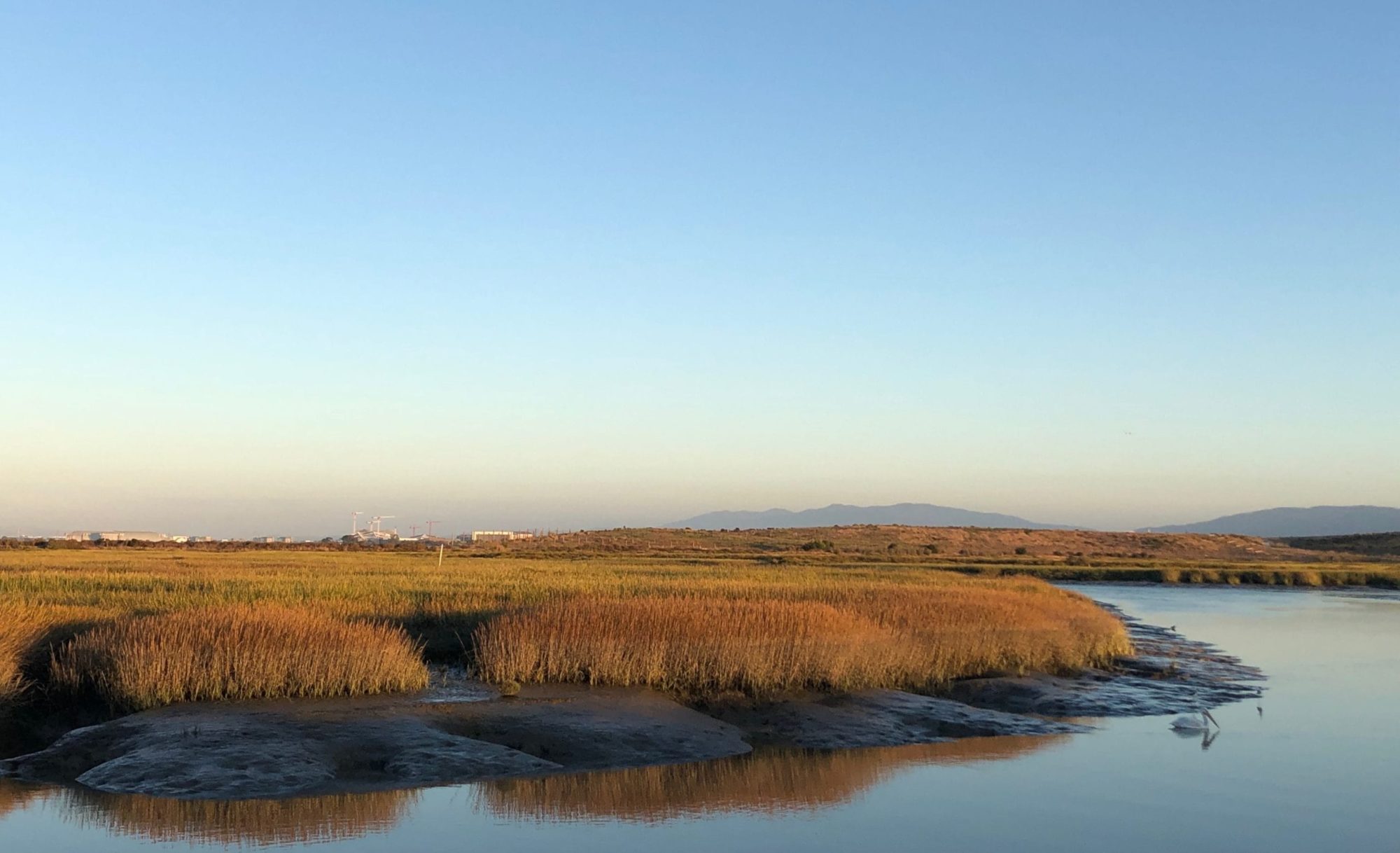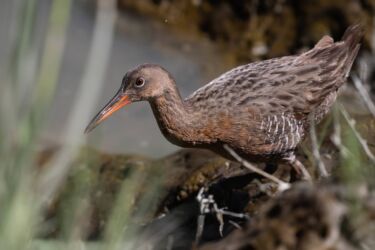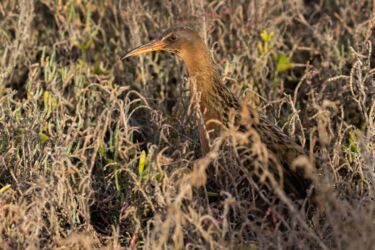
SPECIES SPOTLIGHT: RIDGWAY’S RAIL
Jun 8, 2020 | by Alex Lamoreaux

‘San Francisco Bay’ Ridgway’s Rail standing discreetly at the edge of a marsh in Palo Alto Baylands of central California. Photo by Alex Lamoreaux.
The name Ridgway’s Rail may be unfamiliar to many birders because it is the result of 2014’s three-way split of Clapper Rail, the same year when a split of King Rail also occurred. Most field guides haven’t been updated recently enough to show this new species listed! In 2014 “Clapper Rail” became 3 species; with Ridgway’s Rail claiming the West Coast subspecies, Mangrove Rail taking the South American subspecies, and Clapper Rail continuing to claim the East Coast and Caribbean subspecies. There is still much to learn about Rallus genetics and relationships in the Americas, and it is entirely possible more splits are in their future – in fact, there is evidence to suggest Ridgway’s Rail is actually more genetically similar to the Aztec Rail (formerly a ssp of King Rail) found in central Mexico than it is to Clapper Rail! With Ridgway’s Rail now considered it’s own species, this has created a very range-restricted species for birders to track down in California and Arizona!
Slightly smaller and generally more colorful than Clapper Rail, these secretive ‘marsh chickens’ of the muddy back-bays of California are always a big hit on our tours. Often heard much more than they are seen, we actually have been quite lucky catching them out in the open either scurrying between patches of reeds or even swimming across narrow channels!
Ridgway’s Rail represents less than 2,000 individuals (possibly as low as 300-600 pairs) isolated in 4 geographical regions, largely associated with narrow strips of coastal saltmarsh which is constantly threatened by pollution, coastal development, and sea-level rise. There are six subspecies isolated into four main groups; Light-footed, San Francisco Bay, Yuma, and South Baja. Both of our California tours record this rare species annually, with our Central Coast trip finding the ‘San Francisco Bay Rail‘, and our South Coast, Deserts, & Mountains trip recording both ‘Light-footed Rail‘ and ‘Yuma Rail‘. Below is a breakdown of the three subspecies groups we encounter on our birding tours…
‘Light-footed Rail’
Endemic along the coastline of southern California and Baja California, from Santa Barbara to Bahia de San Quintin (eBird map). We’ve had good luck hearing and sometimes even seeing these ‘Light-footed‘ birds in the vast marshlands of San Diego Bay National Wildlife Refuge during our January tour of southern California.
‘San Francisco Bay Rail’
Endemic to central California, from San Jose to Petaluma (eBird map) although previously found as far north as Humbodlt Bay. This subspecies group is now found only in the saltmarshes lining San Francisco Bay, San Pablo Bay, and associated estuaries. On some visits to the Palo Alto Baylands during our September central California tour we have heard as many as 14 ‘San Francisco Bay Rails‘ calling at once! In my opinion, these are the most colorful of the Ridgway’s Rails, with a brighter appearance and almost pink breast!
‘Yuma Rail’
These are the most widespread of the four subspecies groups with potentially ~700 individuals, and notably they are also the only freshwater-tolerant of them all. Found at inland sites with dense reedbeds around the Salton Sea, along the Lower Colorado River from Havasu City south, and along the Gila River east to Phoenix, Arizona (eBird map). Small numbers occur in southern Nevada, near Las Vegas as well. During our January California tour, we have heard ‘Yuma Rails‘ calling from the reed-filled impoundments lining the southern shoreline of the Salton Sea.








































